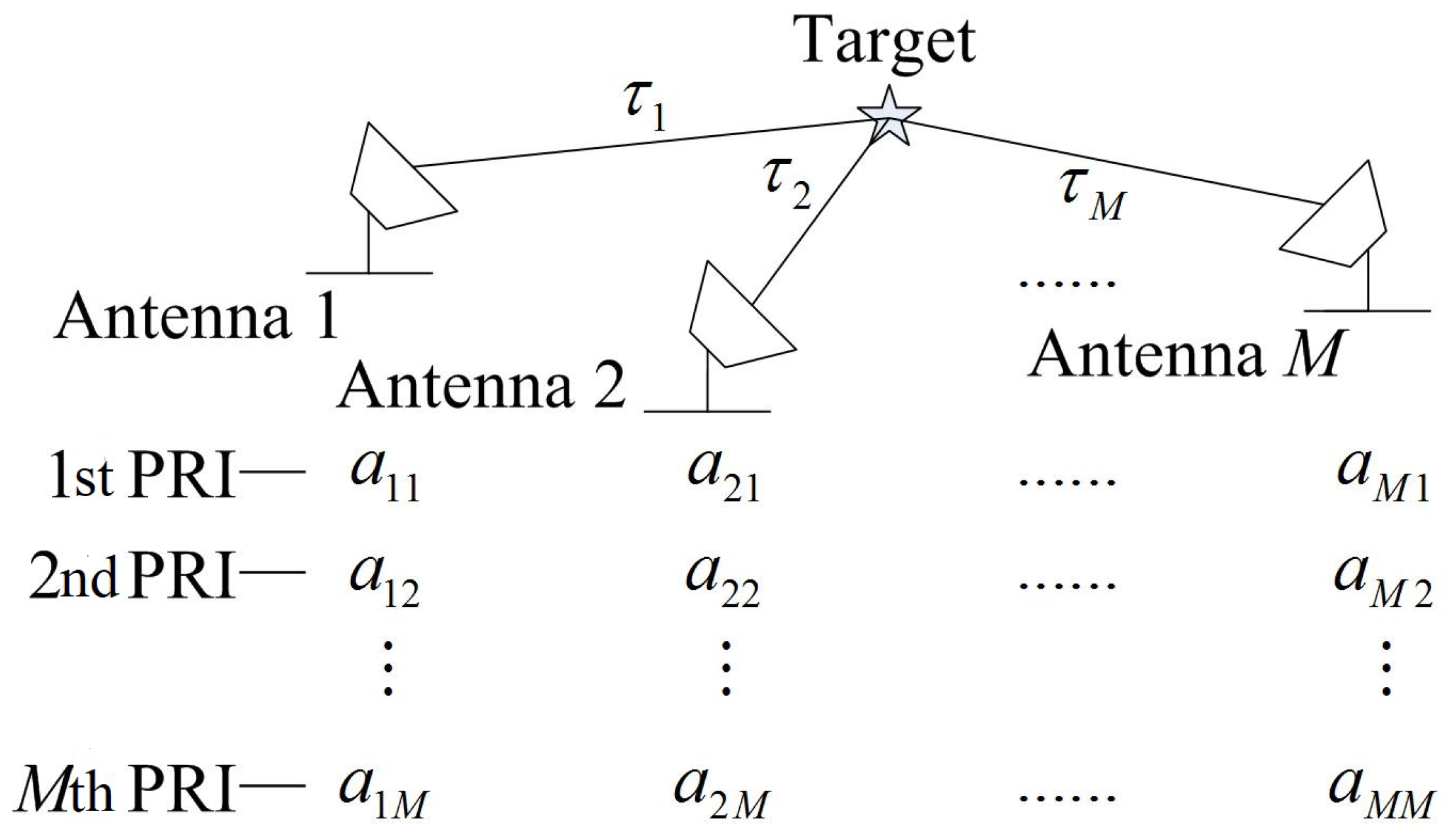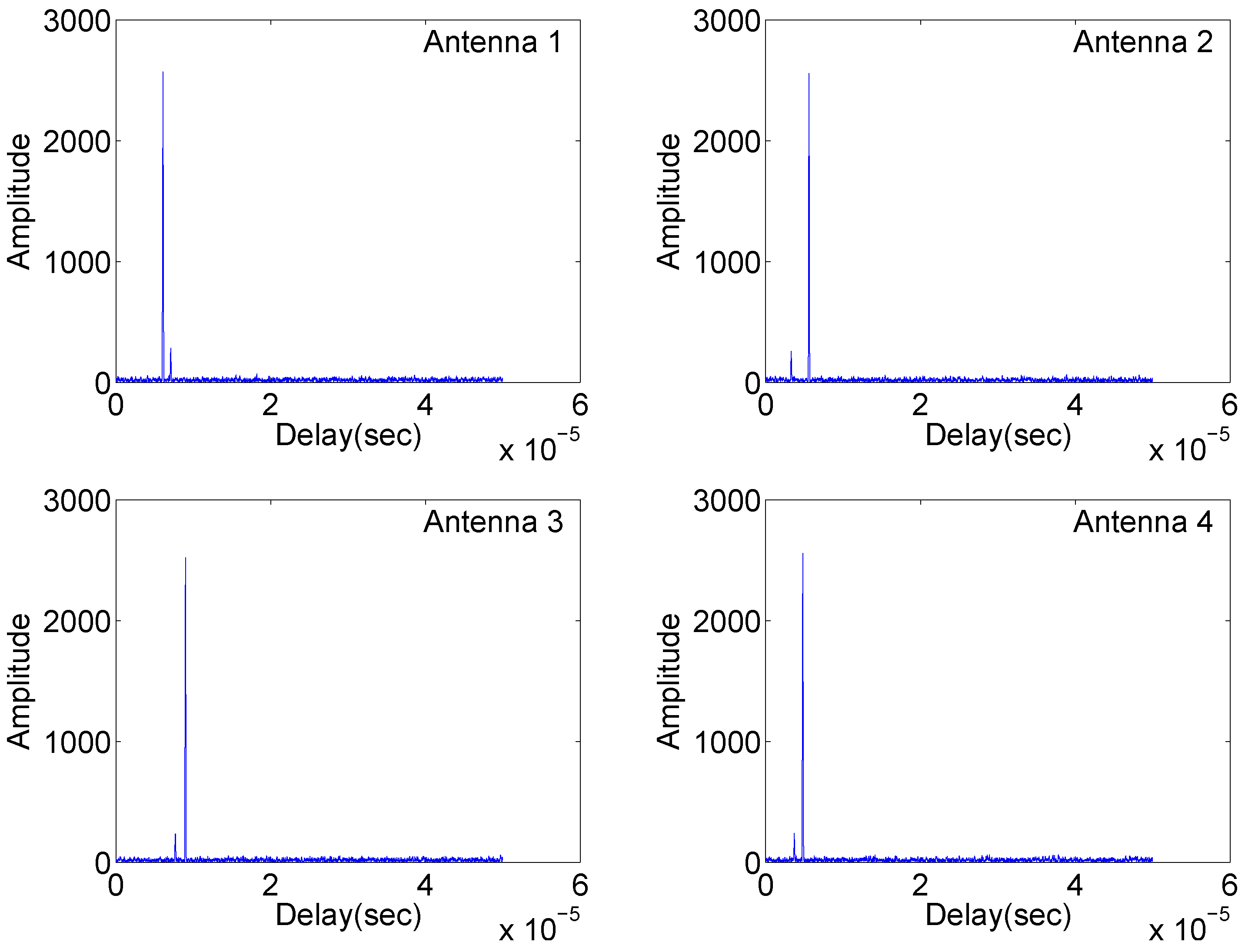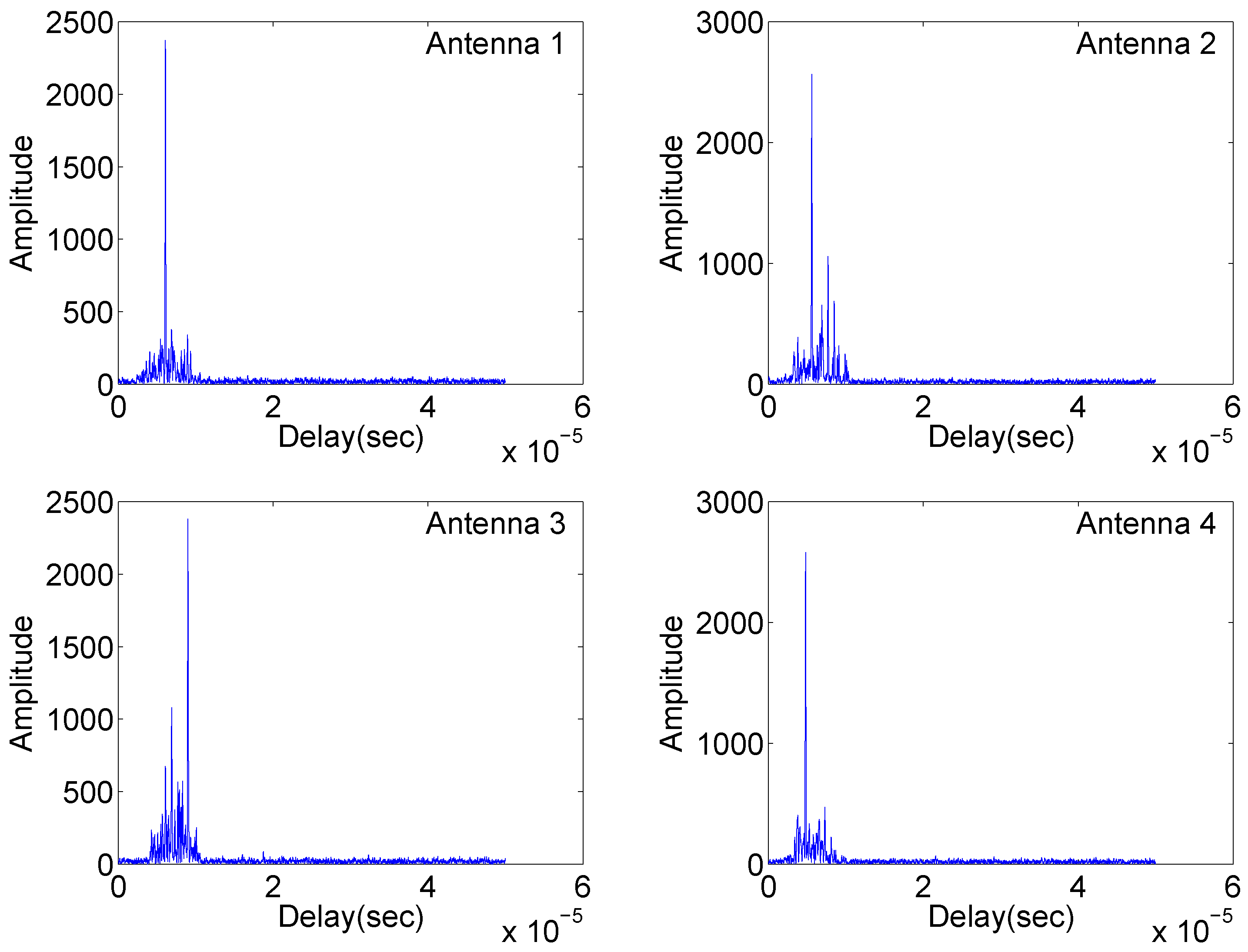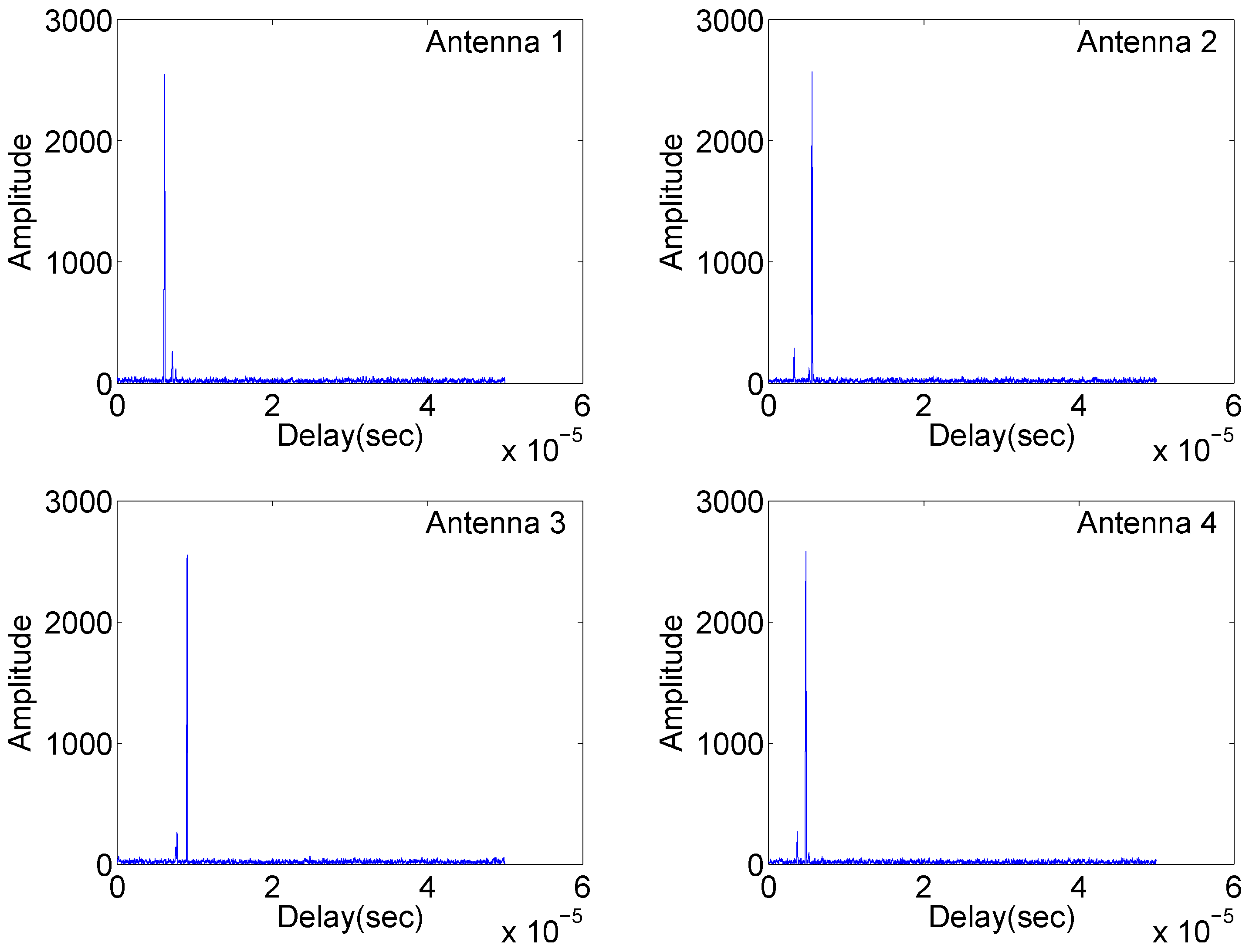Range Sidelobe Suppression Using Complementary Sets in Distributed Multistatic Radar Networks
Abstract
:1. Introduction
2. Mutually Orthogonal Complementary Sets
3. Radar System Model
4. Influence of Carrier Frequencies and Phases
5. Simulation and Discussion
6. Conclusions
Acknowledgments
Author Contributions
Conflicts of Interest
References
- He, Y.; Aubry, P.; Le Chevalier, F.; Yarovoy, A. Decentralised tracking for human target in multistatic ultra-wideband radar. IET Radar Sonar Navig. 2014, 8, 1215–1223. [Google Scholar] [CrossRef]
- Chernyak, V. Signal Processing in Multisite UWB Radar Devices for Searching Survivors in Rubble. In Proceedings of the 2006 European Radar Conference, Manchester, UK, 13–15 September 2006; pp. 190–193. [Google Scholar]
- Nezirovic, A.; Yarovoy, G.; Ligthart, L.P. Signal Processing for Improved Detection of Trapped Victims Using UWB Radar. IEEE Trans. Geosci. Remote Sens. 2010, 48, 2005–2014. [Google Scholar] [CrossRef]
- Bartoletti, S.; Giorgetti, A.; Win, M.Z.; Conti, A. Blind Selection of Representative Observations for Sensor Radar Networks. IEEE Trans. Veh. Technol. 2015, 64, 1388–1400. [Google Scholar] [CrossRef]
- Gulmezoglu, B.; Guldogan, M.B.; Gezici, S. Multiperson Tracking With a Network of Ultrawideband Radar Sensors Based on Gaussian Mixture PHD Filters. IEEE Sens. J. 2015, 15, 2227–2237. [Google Scholar] [CrossRef]
- Bartoletti, S.; Conti, A.; Giorgetti, A.; Win, M.Z. Sensor Radar Networks for Indoor Tracking. IEEE Wirel. Commum. Lett. 2014, 3, 157–160. [Google Scholar]
- Majumder, U.K.; Bell, M.R.; Rangaswamy, M. A novel approach for designing diversity radar waveforms that are orthogonal on both transmit and receive. In Proceedings of the 2013 IEEE Radar Conference (RadarCon13), Ottawa, ON, Canada, 29 April–3 May 2013; pp. 1–6. [Google Scholar]
- Wang, W.Q. Space-time coding MIMO-OFDM SAR for high-resolution imaging. IEEE Trans. Geosci. Remote Sens. 2011, 49, 3094–3104. [Google Scholar] [CrossRef]
- Searle, S.; Howard, S.; Moran, B. The use of complementary sets in MIMO radar. In Proceedings of the 2008 42nd Asilomar Conference on Signals, Systems and Computers, Pacific Grove, CA, USA, 26–29 October 2008; pp. 510–514. [Google Scholar]
- Searle, S.; Howard, S. Waveform design and processing for multichannel MIMO radar. In Proceedings of the 2009 International Radar Conference “Surveillance for a Safer World” (RADAR 2009), Bordeaux, France, 12–16 October 2009; pp. 1–6. [Google Scholar]
- Zhu, J.; Wang, X.; Huang, X.; Suvorova, S.; Moran, B. Range sidelobe suppression for using Golay complementary waveforms in multiple moving target detection. Signal Process. 2017, 141, 28–31. [Google Scholar] [CrossRef]
- Golay, M. Complementary series. IRE Trans. Inf. Theory 1961, 7, 82–87. [Google Scholar] [CrossRef]
- Tseng, C.C.; Liu, C. Complementary sets of sequences. IEEE Trans. Inf. Theory 1972, 18, 644–652. [Google Scholar] [CrossRef]
- Available online: http://www.tek.com/datasheet/arbitrary-waveform-generators-1 (accessed on 1 August 2017).




© 2017 by the authors. Licensee MDPI, Basel, Switzerland. This article is an open access article distributed under the terms and conditions of the Creative Commons Attribution (CC BY) license (http://creativecommons.org/licenses/by/4.0/).
Share and Cite
Zhu, J.; Wang, X.; Song, Y.; Huang, X.; Moran, B. Range Sidelobe Suppression Using Complementary Sets in Distributed Multistatic Radar Networks. Sensors 2018, 18, 35. https://doi.org/10.3390/s18010035
Zhu J, Wang X, Song Y, Huang X, Moran B. Range Sidelobe Suppression Using Complementary Sets in Distributed Multistatic Radar Networks. Sensors. 2018; 18(1):35. https://doi.org/10.3390/s18010035
Chicago/Turabian StyleZhu, Jiahua, Xuezhi Wang, Yongping Song, Xiaotao Huang, and Bill Moran. 2018. "Range Sidelobe Suppression Using Complementary Sets in Distributed Multistatic Radar Networks" Sensors 18, no. 1: 35. https://doi.org/10.3390/s18010035
APA StyleZhu, J., Wang, X., Song, Y., Huang, X., & Moran, B. (2018). Range Sidelobe Suppression Using Complementary Sets in Distributed Multistatic Radar Networks. Sensors, 18(1), 35. https://doi.org/10.3390/s18010035






